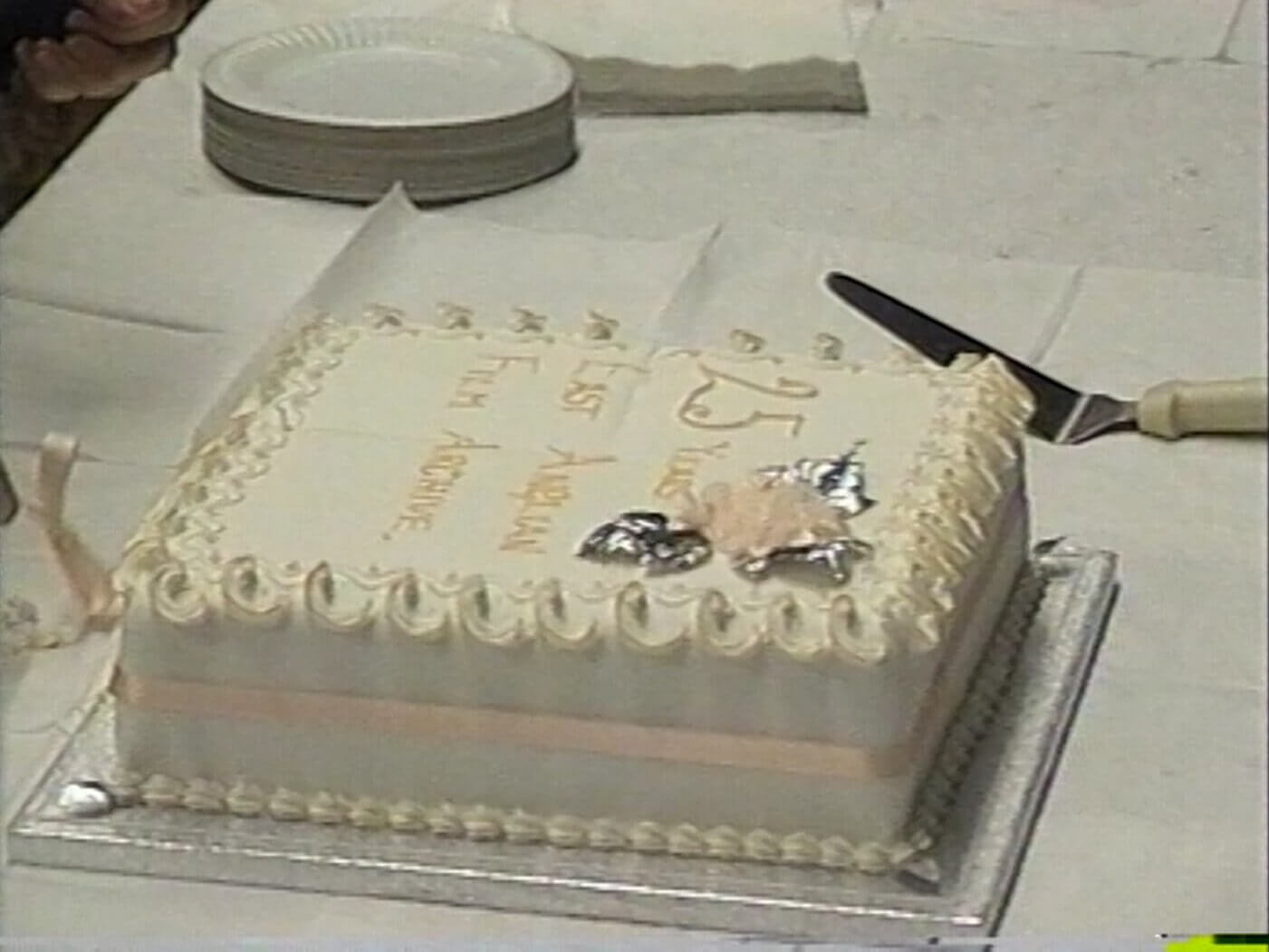
UEA post-graduate student Roseena Hussain reflects on her digitisation internship.
Roseena joined us in the summer of 2024 and undertook a project to digitise tapes from our collections in the run up to the Archive’s fiftieth anniversary in 2026.
For the last three months I’ve been interning as a digitisation technician at the East Anglian Film Archive. The project brief was to digitise a collection of videotapes to be used as part of the Archive’s 50th anniversary celebrations. These tapes were being stored in the vaults of the Archive, and their contents were only half known.
I was trained by the senior technician, Pete Fairchild, and one of the first videos we digitised together was titled EAFA 25 Years. As we watched the footage from 2001, Jane Alvey, the curator, appeared on the screen to cut a large, frosted cake in celebration. One of the next videos took us to 2002, to the construction of the building that still houses the archives. Pete said he thought he was in the video, screwing a shelf into a wall. And he was, along with a few others who still work at the Archive.
Later, once I had learned how to digitise video and was able to make decisions about when to adjust the levels of black, luminance and chroma (and when to leave it alone), I came across a video filmed in the area I grew up in. I, too, found myself searching for familiar landmarks, buildings and shops. Whenever people passed in front of the camera, I slowed the footage down, scanning the faces to see if there was anyone I had once known.

Stills from "EAFA 25 Years" filmed by David Cleveland.
David Cleveland, the founder of the Archive, filmed a series of videos that could be categorised as A Day in the Life of… They follow a similar pattern where David would set off to a place—Bedford, Ipswich, Thorpe St Andrew—and film the people, the shops, the street scenes. Each place is different, yet the footage also highlights the sameness of towns – the pound shops, the pubs, the shop signs. They also show a particular style of filmmaking, the preference of the filmmaker and what caught his eye. What I find most interesting about this series is how when many similar films are viewed side by side, a feeling of difference and sameness is created. If presented with ten videos of visually similar imagery, the viewer will start to simultaneously search for variation, like a moving version of spot the difference.
I had a conversation with Jane about how the meaning of footage can change in the way it is curated and displayed. Monotonous shots of traffic can become beautiful if sped up. The sea played on loop starts to take on an otherworldly quality. Two films screened next to each other will combine to produce a different narrative. Jane mentioned a moment when she was cataloguing a film and saw a flash of a white shape. She slowed the footage down and discovered the shape was a white horse stood on a bridge. The slowing down allowed the horse to emerge when it would have otherwise been missed. This reminded me of the nature of film archives. When we watch film and video, we are looking for something fleeting and beautiful and familiar, searching for places to anchor ourselves, hoping for a glimpse of a white horse on a bridge.
Header image: Cat 215857 : Snapshots of Local Interest : 1930s



